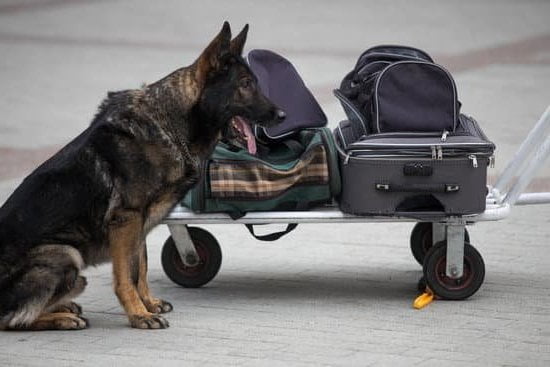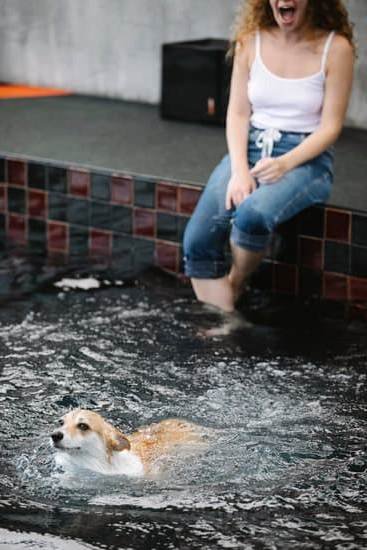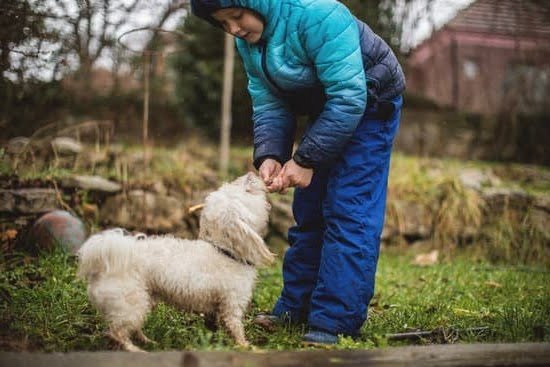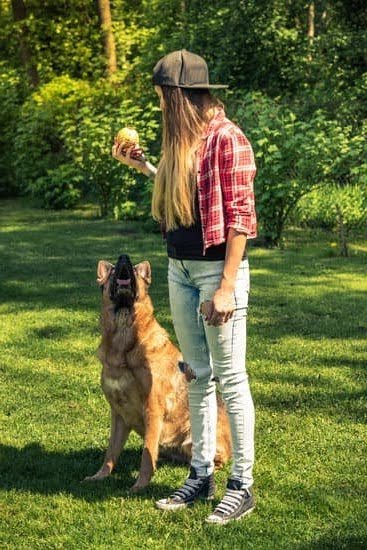Toilet training a dog can be a challenging task, especially when dealing with older dogs who have already developed certain habits and behaviors. However, it is not impossible to successfully toilet train an older dog with patience, consistency, and the right approach. In this article, we will explore the various challenges that arise when toilet training an older dog and provide you with practical tips and techniques to help you overcome them.
One of the first steps in understanding the challenges of toilet training an older dog is assessing the reasons behind their lack of toilet training. There may be various factors contributing to this, including medical issues, previous living conditions, or simply a lack of proper training. By pinpointing the underlying causes for their improper elimination habits, you can develop a tailored approach to address those specific challenges.
Preparing the necessary supplies and environment is also crucial for successful toilet training. This includes investing in appropriate cleaning products specifically designed for removing pet stains and odors, as well as creating a designated potty area that is easily accessible for your older dog. Additionally, providing comfortable bedding and ensuring they have constant access to water will contribute to their overall well-being during the toilet training process.
In order to effectively toilet train your older dog, establishing a consistent routine and schedule for toilet breaks is essential. Dogs thrive on routine and consistency, so setting aside regular times throughout the day to take them outside or to their designated potty area will help reinforce desired behavior. Additionally, using positive reinforcement techniques such as praise, treats, or playtime when they successfully eliminate in the appropriate location will further motivate them to continue exhibiting good bathroom habits.
In the following sections of this article, we will go into detail about all these aspects of toilet training an older dog and how to utilize confinement strategies like crate training or supervision techniques effectively. We will also address common setbacks like accidents and offer tips for dealing with specific challenges or behavioral issues that may arise during the toilet training process.
By following these guidelines and adapting them to suit your dog’s individual needs, you can successfully toilet train your older dog and enjoy a cleaner and happier living environment.
Assessing the reasons behind the lack of toilet training in older dogs
When it comes to toilet training an older dog, it is important to first understand the reasons behind their lack of toilet training. There can be various factors that contribute to this issue, and identifying them can help in devising an effective strategy for successful training.
- Health issues: Older dogs may have underlying health problems that make it difficult for them to hold their bladder or control their bowel movements. It is essential to rule out any medical conditions before proceeding with toilet training. Consulting a veterinarian will help determine if there are any health issues that need to be addressed.
- Past experiences: Dogs who have had previous negative experiences associated with toileting, such as being scolded or punished, may develop anxiety or fear towards eliminating in certain locations or situations. This can result in improper toilet habits. Understanding the dog’s past experiences and providing a positive and supportive environment during toilet training can help overcome these issues.
- Lack of routine and consistency: Older dogs thrive on routine and schedule, so inconsistency in their daily routine can lead to confusion about where and when they should eliminate. Assessing your current routine and making necessary changes to establish a consistent schedule for toilet breaks will greatly aid in their training progress.
Sub-section: Identifying behavioral issues
In addition to health concerns and past experiences, behavioral issues can also play a role in the lack of toilet training in older dogs. Some common behavioral issues include:
- Marking behavior: Male dogs might engage in marking behavior as a way of establishing territory or communicating with other animals. This behavior often becomes more prominent as they age, leading to accidents indoors. Distinguishing between marking behavior and true elimination accidents is crucial for addressing this issue effectively.
- Separation anxiety: Older dogs who have not been properly trained or socialized may develop separation anxiety, causing them stress when left alone and resulting in improper elimination. Separation anxiety can be a complex issue to tackle, and working with a professional dog trainer or behaviorist can provide guidance on how to address this behavioral problem during toilet training.
Sub-section: Seeking professional help
In some cases, toilet training an older dog may require the assistance of a professional dog trainer or behaviorist. These professionals have the expertise to assess the specific challenges faced by your dog and tailor a training plan accordingly. They can provide valuable insights into modifying behaviors, implementing effective strategies, and addressing any underlying issues that may be hindering progress. Seeking professional help can greatly increase the chances of success in toilet training an older dog.
Preparing the necessary supplies and environment for successful toilet training
Before embarking on the journey of toilet training an older dog, it is essential to prepare the necessary supplies and create an environment conducive to successful training. By having the right tools and setting up the surroundings appropriately, you can enhance the effectiveness and efficiency of your training efforts.
First and foremost, you will need a few basic supplies. Begin by purchasing a sturdy leash and collar or harness. These items will be crucial in ensuring that you have control over your dog during toilet breaks outside. Additionally, invest in a few poop bags or scoopers to clean up after your dog.
Next, consider creating a designated toileting area for your dog. This can be done by sectioning off a specific spot in your yard, using potty pads indoors, or even setting up an artificial grass patch on your balcony or patio. Having a consistent location where your dog is encouraged to eliminate will help reinforce good habits.
In addition to supplies, it is important to modify the environment to prevent accidents and encourage desired behavior. Remove any rugs or carpets that might tempt your dog to relieve themselves indoors. Consider using baby gates or closing off certain areas of the house until your dog is reliably toilet trained. This reduction in access will minimize opportunities for accidents to occur.
By taking the time to gather the necessary supplies and tailor the environment accordingly, you are setting yourself and your older dog up for success in their toilet training journey. Remember that every dog is unique, so be patient as you figure out which supplies and modifications work best for your canine companion. With proper preparation, you are laying a solid foundation for successful toilet training.
Establishing a consistent routine and schedule for toilet breaks
Toilet training an older dog can be a challenging process, but establishing a consistent routine and schedule for toilet breaks is essential for success. Dogs thrive on consistency and predictability, so providing them with a structured routine will help them understand when and where they are supposed to eliminate. This section will outline the steps you can take to establish a consistent routine and schedule for toilet breaks.
- Determine the appropriate frequency: Start by understanding your dog’s individual needs. Generally, adult dogs need to eliminate every 4-6 hours. However, this may vary depending on factors such as age, size, health, and diet. Consult with your veterinarian to determine the appropriate frequency for your older dog.
- Choose a designated elimination area: It is important to choose a specific spot where you want your dog to eliminate consistently. This helps them develop an association between that particular area and going potty. Ideally, this should be an easily accessible outdoor location or an indoor option like pee pads or artificial grass if necessary.
- Establish a consistent schedule: Once you have determined the frequency and designated area, create a schedule that aligns with those needs. Take your dog out at the same times every day-morning, midday, afternoon, evening-and stick to it as closely as possible. Consistency is key in reinforcing desired behavior and preventing accidents.
To help you keep track of your dog’s toilet breaks and stay consistent with their routine, consider using these strategies:
- Use an alarm or reminder on your phone or clock to alert you when it’s time for a potty break.
- Keep a journal or use an app to track when your dog eliminates so that you can identify patterns in their behavior.
- Consider hiring a professional dog walker or asking someone trusted to assist if you are unable to adhere strictly to the schedule due to work or other commitments.
By establishing a consistent routine and schedule for toilet breaks, you are setting your older dog up for success in their toilet training journey. Remember to be patient and consistent, as it may take time for your dog to adapt to this new routine.
Positive reinforcement techniques for encouraging desired behavior
Positive reinforcement techniques play a crucial role in toilet training an older dog. By using positive reinforcement, you can motivate and encourage your dog to exhibit the desired behavior of using the designated toilet area. Here are some effective techniques to consider when toilet training your older dog:
Reward-based training
One of the most effective ways to reinforce desired behavior is through rewards. Whenever your dog successfully eliminates in the designated area, immediately praise them with enthusiasm and offer a tasty treat or their favorite toy as a reward. This positive association will help them understand that going to the bathroom in the right spot leads to good things.
Verbal cues and commands
Teach your dog specific verbal cues or commands associated with toileting. Use consistent words such as “go potty” or “do your business” every time you take them to their designated area. Over time, your dog will begin to associate these cues with the action of eliminating, making it easier for them to understand what is expected of them.
Regular monitoring and supervision
Constant monitoring and supervision are essential during the early stages of toilet training. When indoors, keep an eye on your dog at all times, especially after meals or naps, as these are common times when they may need to go outside for a bathroom break. If you notice any signs that they need to eliminate, such as circling or sniffing around, immediately take them to their designated area.
Clicker training
Clicker training can be a helpful tool for reinforcing desired behavior during toilet training. Start by associating a distinct clicking sound from a clicker device with treats or rewards. When your dog eliminates in the correct spot, click the device and provide immediate praise and rewards. The click becomes a signal that tells them they have done something correctly.
By combining these positive reinforcement techniques, you can encourage your older dog to develop the desired toileting habits. Remember, consistency and patience are key throughout the toilet training process. It may take some time for your dog to learn and adapt, but with dedication and positive reinforcement, you will ultimately achieve success in toilet training your older dog.
Addressing and correcting accidents and setbacks during the toilet training process
Toilet training an older dog may come with its fair share of accidents and setbacks. It is important to remain patient and consistent throughout the process, as accidents are a normal part of learning. Here are some strategies for addressing and correcting accidents during the toilet training process:
- Clean up promptly: When accidents happen, it’s crucial to clean up the mess promptly and thoroughly. Use an enzymatic cleaner specifically designed for pet stains to remove any lingering odor that may attract your dog back to that spot.
- Do not punish: It is important not to punish your older dog for accidents. Punishment can create fear or anxiety around toileting, making the training process even more challenging. Instead, simply clean up the accident without drawing attention to it, and focus on reinforcing good behavior when your dog eliminates in the appropriate spot.
- Revisit crate training: If accidents become a recurring problem, consider revisiting crate training as a helpful tool in the toilet training process. Crates can be used to confine your dog when you cannot supervise them closely, helping prevent accidents from occurring throughout the day.
- Increase supervision: Accidents often occur when dogs have too much freedom or are left unsupervised for extended periods of time. Increasing supervision can help prevent accidents by allowing you to anticipate their needs and take them outside before they have a chance to eliminate indoors.
- Narrow down possible triggers: Pay attention to any patterns or triggers that may lead to accidents, such as certain times of day or specific activities. By identifying these triggers, you can proactively address them and potentially minimize future accidents.
Remember that setbacks are normal during toilet training, especially with older dogs who may have ingrained habits or physical limitations. Stay consistent with your training methods and provide positive reinforcement when your dog eliminates in the appropriate spot. With time and patience, your older dog will eventually understand and adapt to the desired toileting behavior.
Utilizing confinement and supervision strategies to reinforce toilet training
Utilizing confinement and supervision strategies is an essential aspect of reinforcing toilet training in older dogs. Confinement helps to limit the dog’s access to areas where accidents may occur, while supervision ensures that you can closely monitor their behavior and provide immediate guidance when needed. By incorporating these strategies into your toilet training routine, you can greatly increase the chances of success.
One effective method of confinement is using a crate. Dogs have a natural instinct to keep their sleeping area clean, so a properly sized crate can help prevent accidents during the toilet training process. The crate should be just big enough for the dog to stand up and turn around comfortably.
Gradually introduce the dog to the crate by associating it with positive experiences, such as meals or treats. When using the crate for confinement, make sure not to leave your dog in it for extended periods. Provide regular breaks for them to relieve themselves outside of the crate.
Supervision goes hand in hand with confinement. Whenever your dog is not confined, keep a close eye on them at all times. This means having them within eyesight or using baby gates or leashes to create boundaries within your home. By being vigilant, you can quickly notice any signs that your dog needs to eliminate and promptly take them outside to their designated toileting area.
In addition to containment and supervision, it is important to establish a consistent routine for regular toilet breaks throughout the day. Take your older dog outside first thing in the morning, after each meal or water intake, after playtime or excitement, and before bedtime.
Use verbal cues such as “go potty” or “do your business” while they are eliminating to associate those commands with the desired behavior. Remember to praise and reward them immediately after they finish eliminating in the correct spot.
By utilizing confinement and supervision strategies in conjunction with other techniques outlined in this article, you can reinforce toilet training in older dogs effectively. Consistency is key throughout the process, and with patience and perseverance, your older dog will soon develop reliable toileting habits.
Incorporating crate training as a helpful tool in toilet training older dogs
Crate training can be a valuable tool in toilet training older dogs. The use of a crate provides a safe and secure space for your dog when you cannot directly supervise them, preventing accidents and promoting successful toilet training. When utilizing crate training for toilet training purposes, it is important to introduce the crate gradually and make it a positive and comfortable space for your dog.
To begin incorporating crate training, choose an appropriately sized crate that allows your dog to stand, turn around, and lie down comfortably. Make sure that the crate is well-ventilated and has a comfortable bedding material for your dog.
Introduce the crate slowly by associating it with positive experiences. Leave the door of the crate open initially so that your dog can explore it at their own pace. Place treats or toys inside the crate to encourage them to enter willingly. Gradually increase the amount of time your dog spends in the crate during each session, starting with short intervals and working up to longer periods.
It is important not to use the crate as a form of punishment. Avoid forcing your dog into the crate or using it as a means of confinement when they have misbehaved. Crate training should always be gentle, positive, and focused on making your dog feel safe and secure.
By incorporating crate training into toilet training routines, you are giving your older dog an effective tool for successful potty training. Utilizing a consistent routine, positive reinforcement techniques, and properly addressing accidents or setbacks will help ensure that your older dog becomes fully toilet trained in no time at all.
Tips for dealing with specific challenges and behavioral issues during the toilet training process.
Toilet training an older dog can come with its own set of challenges and behavioral issues. Each dog is unique, and it’s important to address these obstacles in a specific and tailored manner. Here are some tips for dealing with specific challenges and behavioral issues during the toilet training process.
One common challenge is when an older dog has been conditioned to eliminate in certain areas or on certain surfaces. This could be due to previous living conditions or incorrect toilet training methods used in the past. If your dog shows a preference for eliminating on carpet rather than outside on grass, for example, you will need to recondition their preferences.
Start by restricting access to those areas where accidents occur, and gradually introduce them to appropriate elimination areas outside. Use positive reinforcement techniques such as treats or praise when they successfully eliminate in the desired area.
Another challenge that may arise is when an older dog experiences anxiety or fear while attempting to toilet train. This could result from a traumatic experience associated with bathroom-related activities, or it may simply be due to general anxiety or fearfulness. In these cases, it is important to create a calm and safe environment for your dog during toilet breaks.
Minimize distractions and provide reassurance through gentle petting or soothing words. Gradually expose your dog to different environments and situations while maintaining positive reinforcement for desired behavior.
For some older dogs, marking behavior can become an issue during the toilet training process. Marking is typically associated with territory marking rather than true bathroom needs, so it’s important to differentiate between the two behaviors. If your dog consistently marks inside the house even after successful toilet breaks outside, it may be necessary to consult with a professional trainer or behaviorist who can help address this issue effectively through specialized techniques tailored for your individual situation.
Dealing with specific challenges and behavioral issues during the toilet training process requires patience, consistency, and understanding of your dog’s unique needs and behaviors. By approaching these challenges head-on and with the right techniques, you can overcome any obstacles and successfully toilet train your older dog. Remember to always provide positive reinforcement and seek professional help when necessary to create a positive toilet training experience for both you and your furry companion.
Conclusion
In conclusion, successfully toilet training an older dog is definitely achievable with patience, consistency, and the right techniques. It may take some time and effort, but the satisfaction of seeing your furry friend finally understand where to go for their bathroom needs is well worth it.
Throughout this article, we discussed various strategies for toilet training older dogs. From understanding the challenges they face to assessing the reasons behind their lack of toilet training, we laid out a comprehensive plan to address these issues. We also discussed the importance of preparing the necessary supplies and environment, establishing a consistent routine, using positive reinforcement techniques, addressing accidents and setbacks, utilizing confinement and supervision strategies, incorporating crate training, and dealing with specific challenges and behavioral issues.
By following these guidelines and adapting them to suit your dog’s individual needs, you can celebrate success in toilet training your older dog. Remember that every dog is different and may progress at their own pace. Be patient with them as they learn this new skill.
Finally, always maintain a positive attitude throughout the process. Your older dog relies on your guidance and encouragement to understand what is expected of them. Celebrate their successes along the way by giving praise or rewards when they use the designated area for toileting correctly.
Toilet training an older dog is a journey that requires dedication and consistency from both you and your pet. Stay committed to the process, persevere through setbacks, and never give up on your furry friend. With time and effort you will both enjoy a cleaner home and a happier relationship.
Frequently Asked Questions
Can an older dog still be potty trained?
Yes, an older dog can still be potty trained. While it may take a bit more time and patience compared to training a puppy, it is definitely possible for an older dog to learn new habits and adjust their bathroom routine.
Older dogs might have already developed certain behaviors or habits, but with consistent training and positive reinforcement, they can be guided towards appropriate elimination behaviors.
What is the best way to potty train an older dog?
The best way to potty train an older dog is through a combination of consistency, positive reinforcement, and setting up a routine. Start by taking your dog outside frequently, especially after meals or naps, and provide them with ample opportunities to eliminate in the desired spot. When your dog successfully goes outside, praise and reward them with treats or verbal affirmations to reinforce the behavior you want to encourage.
On the other hand, if your dog has an accident indoors, avoid scolding or punishing them as this may confuse or stress them further. Instead, clean up the mess calmly without drawing attention to it.
How do you train an older dog not to pee and poop in the house?
To train an older dog not to pee and poop in the house, it is crucial to identify any underlying medical issues that may contribute to their accidents such as urinary tract infections or mobility problems. Consulting with a veterinarian can help rule out any health problems and address specific concerns related to your dog’s elimination habits. Additionally, create a designated bathroom area for your dog outside which should be easily accessible for them at all times.
Consistently take your dog out on a schedule throughout the day and reward them for successful outdoor elimination. To prevent accidents indoors, supervise your dog closely when they are inside the house so you can intervene in case they show signs of needing to relieve themselves – like pacing or sniffing around – then quickly redirect them outside if necessary.

Welcome to the blog! I am a professional dog trainer and have been working with dogs for many years. In this blog, I will be discussing various topics related to dog training, including tips, tricks, and advice. I hope you find this information helpful and informative. Thanks for reading!





